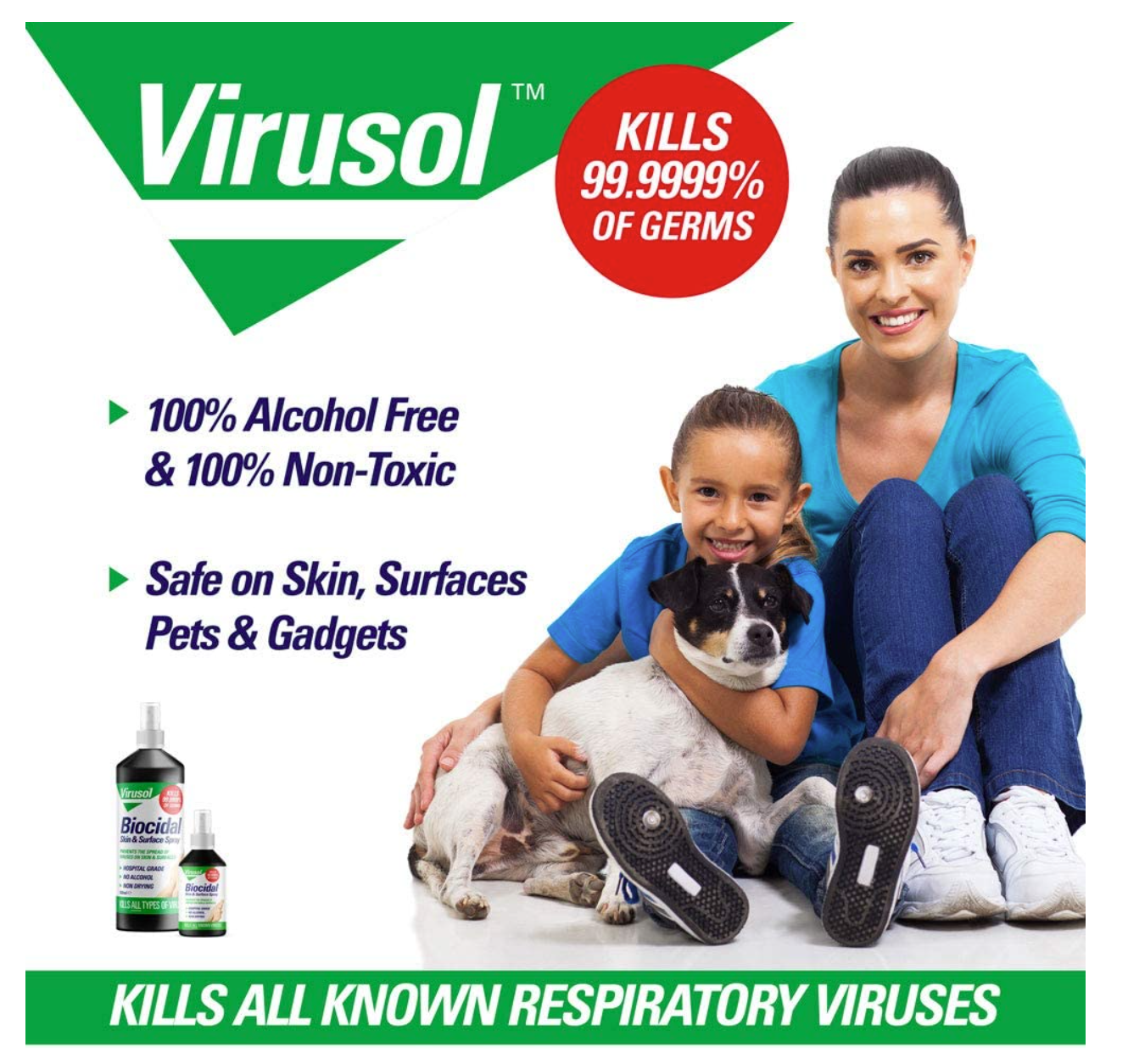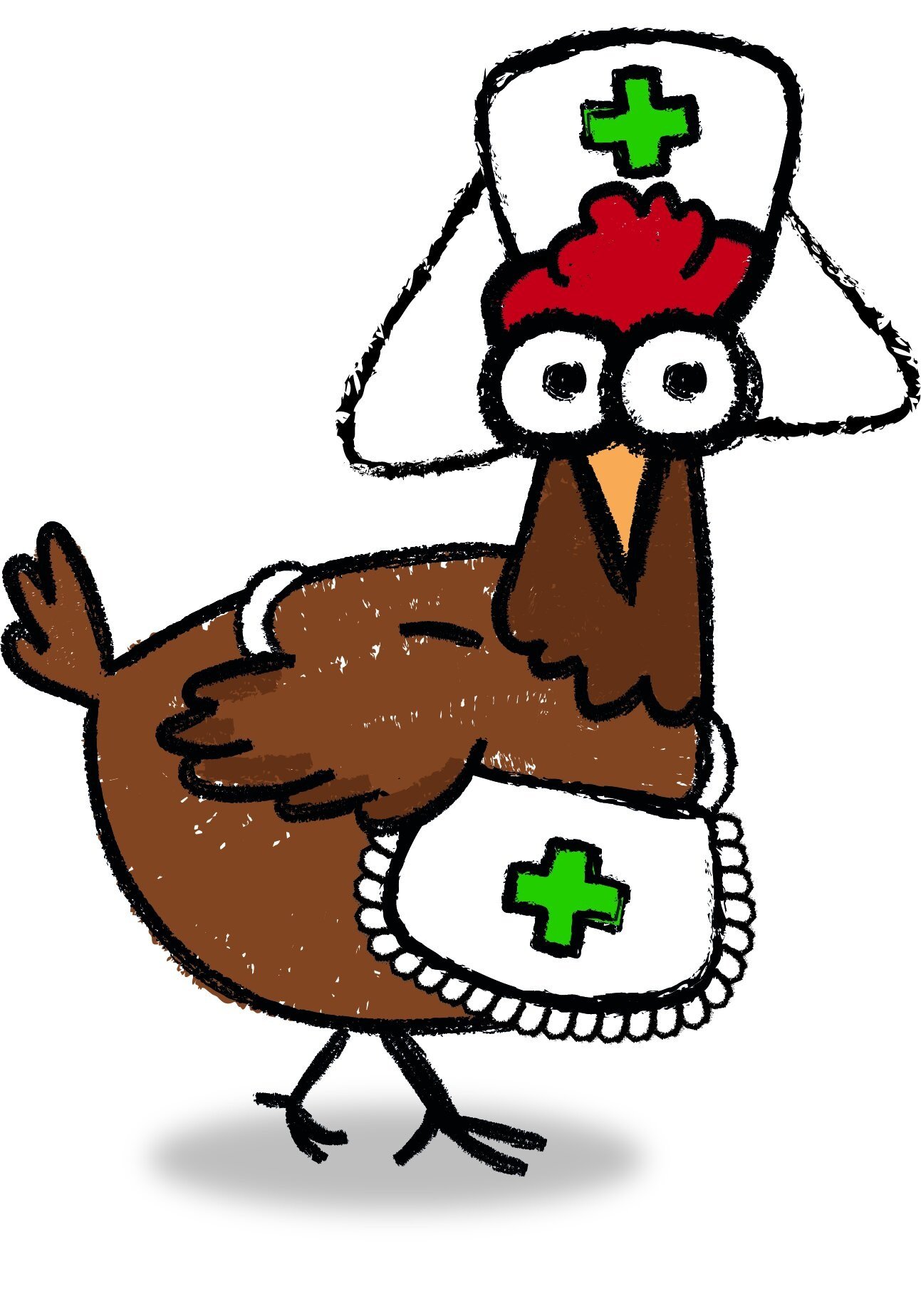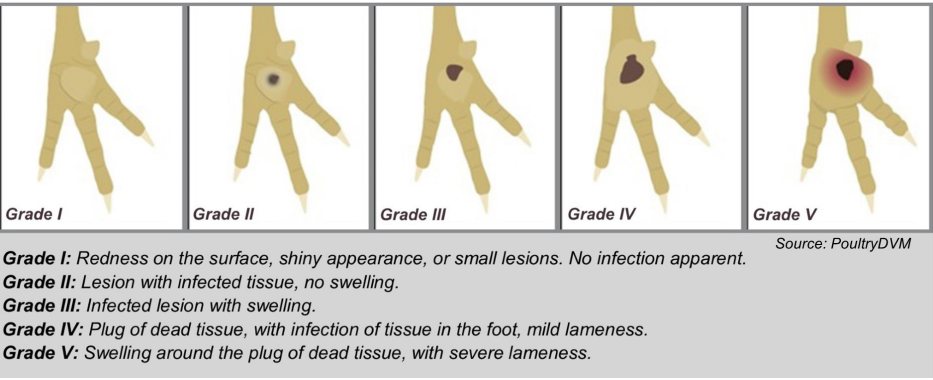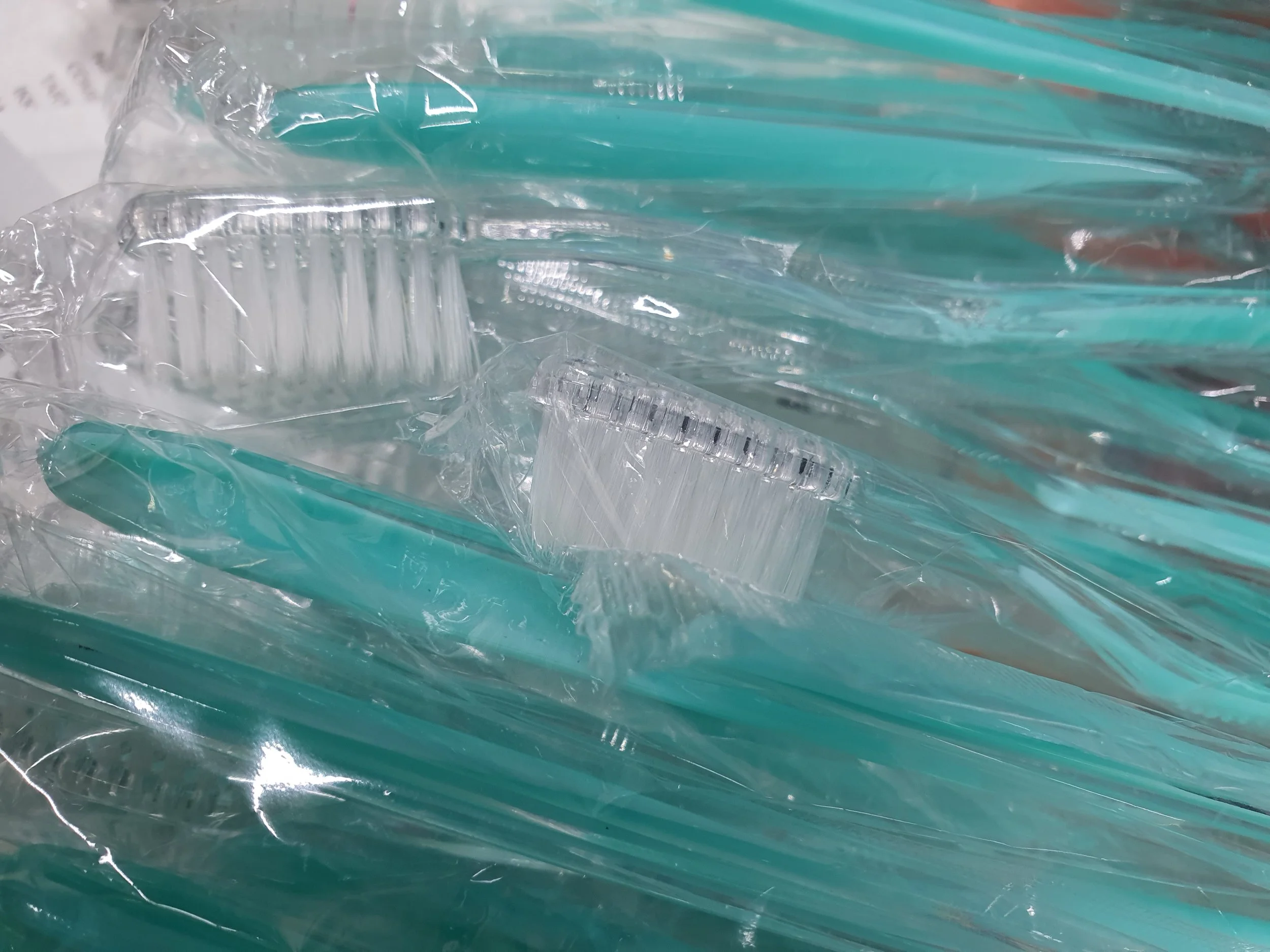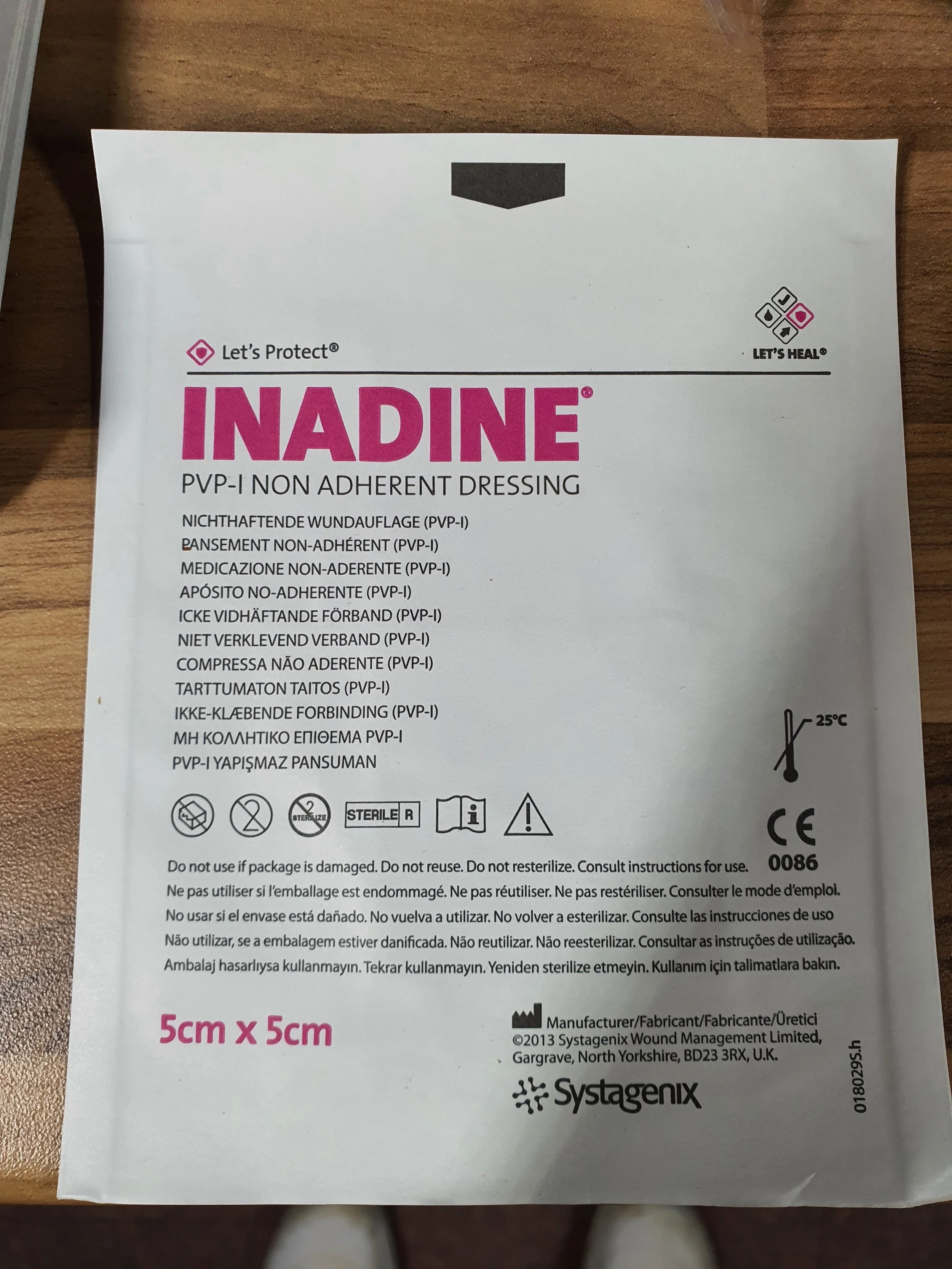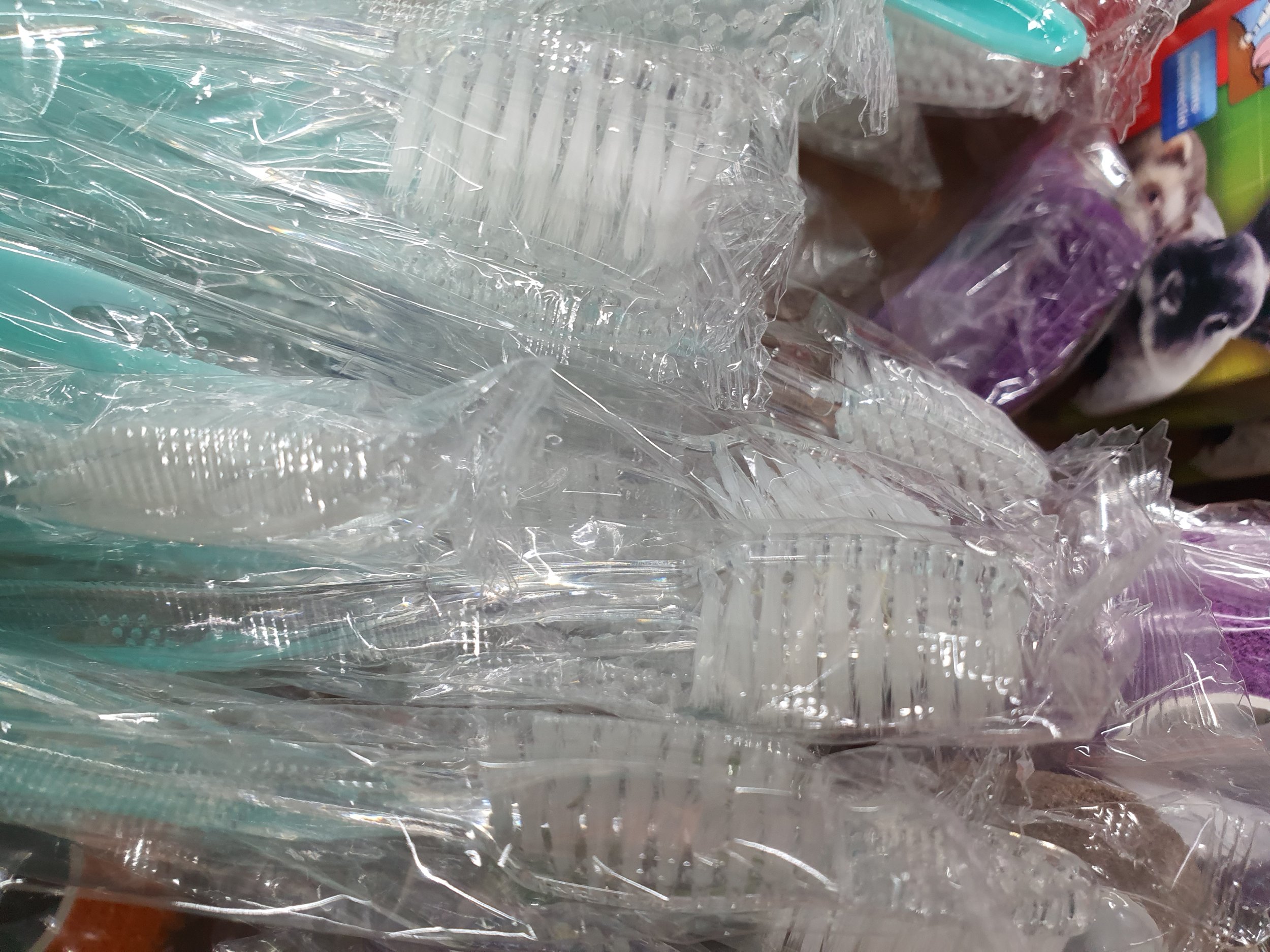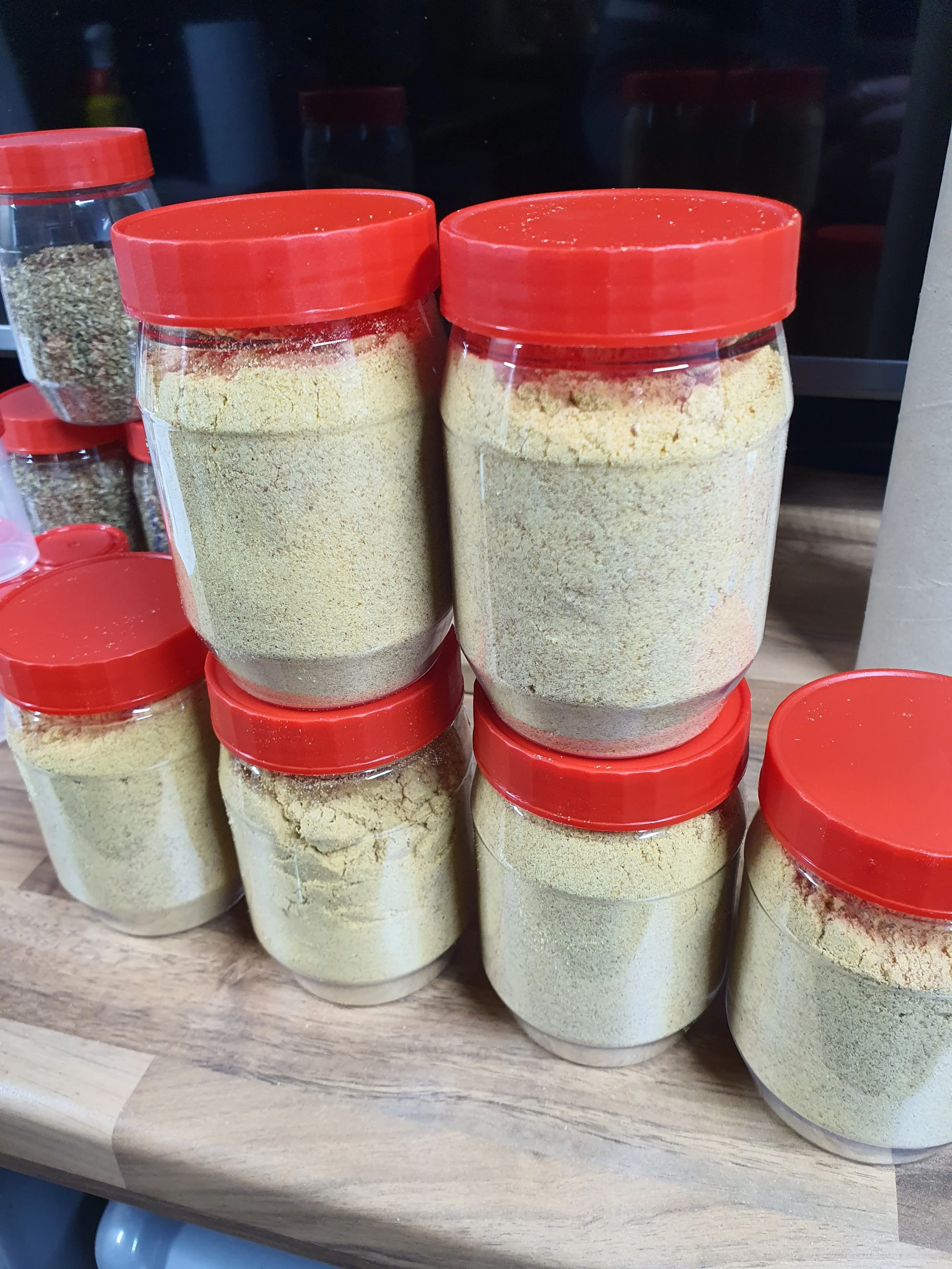Administering the drain procedure (this is easiest with a helper but is not difficult to do alone once you have done it with a helper)
Be certain that your chicken actually has water belly (ascites), if you undertake this procedure on a chicken that doesn’t have a fluid-filled abdomen you may kill her. A chicken with water belly will be heavy and her lower abdomen will be swollen and feel like a water-filled balloon. She may be waddling like a duck when she walks or standing upright like a runner duck. If she has similar symptoms but her abdomen is rock hard this is not water belly and this drain procedure will not work.
First, catch your chicken! (don’t wear your best outfit, you may be about to get wet). Fit the needle to the syringe if you plan to use the syringe, it is a simple push fit (leave the cap on the needle while fitting). Remove the cap from the needle and KEEP IT, you will need it later to make the needle safe for reuse or disposal.
Important!
Draining too much fluid in one go can cause shock, rapid loss of blood pressure and death, aim to drain no more than 2/3 of the fluid at any one time.
Ask your assistant to hold the chicken gently but firmly in front of you and slightly to one side with the chicken’s butt facing toward you (adjust to suit your own height and posture to what is most comfortable for you, your helper, and your chicken). Make sure you can see the chicken’s butt. You are aiming to pierce the soft flesh 1 inch beneath and 1 inch to the RIGHT side of her cloaca (butthole). Avoid piercing the hardened flesh around her cloaca, you are aiming for the softer thin skin below and to one side. You may not even need the syringe and the needle alone may be sufficient. Experience will guide you
Gently comb the feathers aside with your fingers, look closely for veins under the skin and avoid puncturing them with the needle (they will look purple or blue). Aim for a patch of skin with no veins and no poop. If you can’t see for feathers, don’t worry. Squirt a couple of sprays of AB spray onto the area you are about to pierce. She may wriggle when you do this.
You may be able to proceed with just the needle, if her belly is full and under pressure, the fluid will drain without being drawn with a syringe, use the syringe to draw the fluid if you prefer, either way should work. You are aiming to do this only once and not repeatedly stab her with the needle, aim to get it right the first time, you will be nervous enough without making a hash of it
An 18g needle is approximately 4cm long, you only need to insert 2cm, do not push the whole needle in, do not worry if you do, simply draw it out a little A 16g needle is 3cm long, you only need to insert 2cm, do not push the whole needle in. When inserting the needle you will need a very short, sharp stab to pierce the skin initially, the needles are very sharp and will insert easily. You can gently push the needle in but this tends to be more painful for the chicken and she may wriggle free.
As soon as the needle is inserted you should feel and see warm fluid which is the same colour as urine start to pour out of the needle, it will typically not smell unpleasant and may smell quite sweet. Your chicken will feel immediate relief and may perk up almost instantly and want to jump free. Do not let her jump about with a needle in her butt, hold her gently until enough fluid has drained. Pull out the needle before setting her free. Fluid may continue to dribble out even once the needle is out, this should be fine.
If blood pours out of the needle, take the needle out and try another spot, if egg yolk comes out of the needle, take the needle out as she likely has Egg Yolk Peritonitis and needs a different treatment.
Once you have administered the procedure you may place your chicken back where she came from, in with the other girlies, or back in her hospital bed. She will immediately perk up and want to eat and drink and may seem quite pleased with herself. This is because her organs are no longer congested by the pressure of the fluid. If she is floppy and unresponsive or staggering she may be about to die and it was too late to help. You did your best.
Cleaning the equipment
After administering the procedure you may clean the syringe and hypodermic as follows and reuse them up to 10 or more times (if cleaned and dried thoroughly and carefully).
Put the hypodermic needle into a small tub or bowl of Milton (or similar) sterilising fluid. Suck clean water rapidly into the syringe and forcefully eject it again 2 or 3 times to wash out any contaminants. Pull the syringe apart and leave to soak in Milton or similar sterilising fluid, do not reuse this syringe for feeding and keep it separate for this procedure only. You may of course dispose of both and use a new one each time. Put the cap back on the needle before discarding, bin men have a hard enough job as it is. We advise that you wrap any syringes and needles for disposal so that they are not visible in your refuse, there is a stigma attached to syringes and needles and being a chicken-keeper is enough trouble without bringing unwanted attention from elsewhere.
To reuse the syringe
In human medicine, the syringes are designed for single use only and after several uses, the plunger rubber will stretch and it will be difficult to reassemble the plunger into the syringe body. Pour a few drops of olive oil into the open end of the syringe body then, holding the plunger against the hole, cause the oil to run onto the plunger rubber and rotate the plunger to smear olive oil onto the whole of the rubber component of the plunger, this will allow much easier reassembly of the syringe and extend the life of the plunger.
NEW from May 2023!! Now includes 28 days of Milk Thistle Liver support (14 capsules)
Administer 1 x Milk Thistle capsule every 2 days until your supply is finished (28 days supplied), split the capsule and add to some wetted mash or damp pellets. Mix thoroughly. Feed your water belly chicken the prepared MT Mash from a small pot or spoon to ensure that she gets it all herself (you may need to briefly isolate her from the flock for this to work!). Milk thistle is known to reduce fatty liver syndrome and aid the recovery from liver cirrhosis in many animals. Liver issues are known to cause ascites in chickens.


